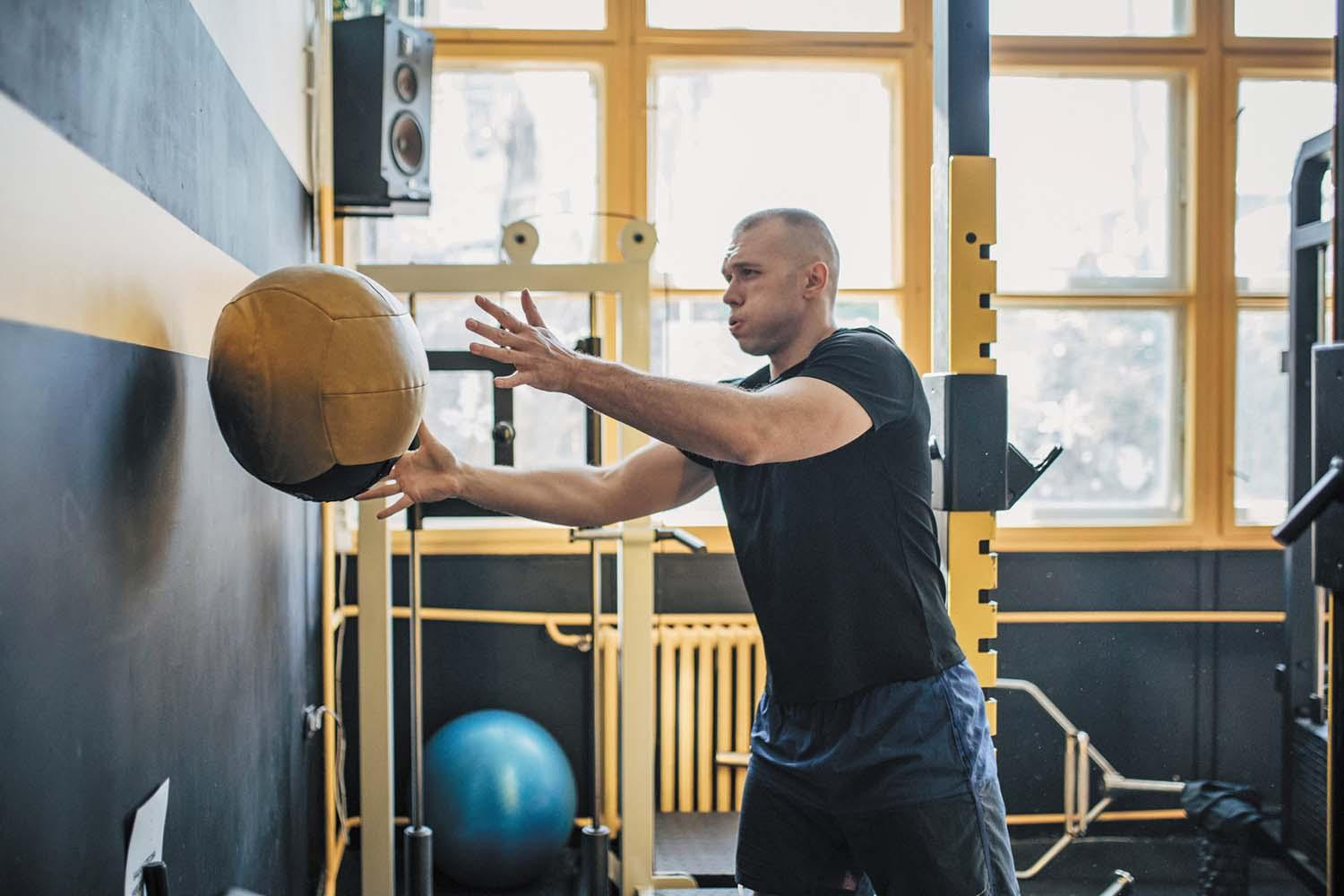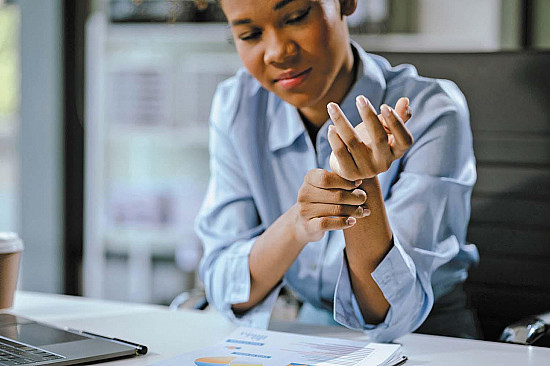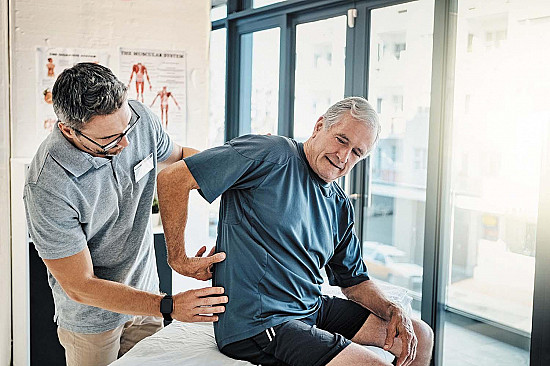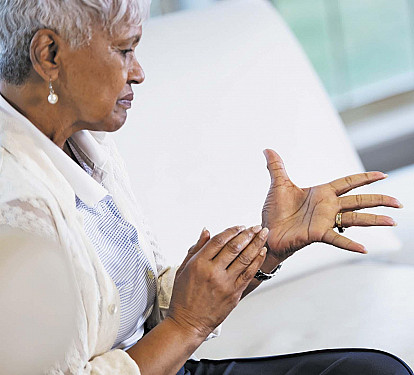Power play
Improving power increases speed and reduces injury risk.
- Reviewed by Howard E. LeWine, MD, Chief Medical Editor, Harvard Health Publishing; Editorial Advisory Board Member, Harvard Health Publishing

You can usually gauge your strength by how much weight you can lift and carry, but what about your physical power? Power is the ability to generate a large amount of force in a short amount of time. It combines both strength and speed, allowing for rapid, explosive movements.
“The ability to generate power is not something people think about, but it becomes a highly valuable skill as you age,” says Logan Delisle, a strength and conditioning specialist at the Harvard-affiliated Mass General Brigham Center for Sports Performance and Research.
You need sufficient power to properly execute many everyday movements, like climbing stairs, lifting and carrying heavy objects, twisting, pulling, and throwing. “The ability to generate power also improves movement efficiency and reaction time to help you avoid injuries from falls,” says Delisle.
The need for strength training
Men can experience a power drain as they naturally lose muscle mass with age, known as sarcopenia. “Loss of muscle mass leads to less strength, and subsequently a diminished ability to create powerful, explosive actions,” says Delisle. “So, the first step for increasing power is building more muscle mass with strength training.”
A complete strength training routine should include squats, bench presses, and deadlifts, a combination that forms the basis of the competitive sport of power lifting. “These exercises not only help build overall muscle mass but also strengthen the main muscle groups that help generate power — the gluteal muscles, quadriceps, and hamstrings,” says Delisle. “They also strengthen fast-twitch muscle fibers in the lower body responsible for executing explosive movements.” To safely focus your workouts on increasing power, consider consulting a personal trainer to help tailor your exercises to meet your specific needs and abilities.
Plyometrics for power training
Another way to improve power is with plyometric exercises. Plyometrics are short, intense bursts of activity that also target fast-twitch muscle fibers in the lower body. “Plyometrics generally utilize a movement pattern known as triple extension, which involves the simultaneous engagement of the hips, knees, and ankles,” says Delisle.
There are many kinds of plyometric exercises, but here are two that Delisle recommends for many of his older clients, as they can be performed by most people regardless of their fitness level. (Still, check with your doctor or physical therapist before attempting plyometrics if you have any orthopedic issues that limit certain movements.)
Pogo hops
Pogo hops help increase strength and flexibility in the tendons of the lower body, which helps build capacity to tolerate explosive movements, whether in everyday life or when exercising. “For most people, pogo hops are a safe and effective entry point to plyometric training,” says Delisle.
Stand with your feet hip-width apart and your hands on your hips. Slightly bend your knees. Make small jumps up and down in the same spot, like riding a pogo stick, landing on the balls of your feet and immediately pushing off again. Maintain a quick, bouncy rhythm, and don’t worry about how high you hop. Continue hopping for five to 10 seconds, rest, and repeat two or three times. As you progress, aim for higher hops and longer time periods.
Medicine ball moves
Medicine ball slams and throws help generate power and transfer it throughout the upper body, core, and lower body to support movement in various directions.
Medicine ball slams. Begin with a lightweight medicine ball (4 to 8 pounds). Stand with your feet hip-width apart, toes pointing straight ahead. Hold the medicine ball with both hands at chest height, arms bent. Extend your arms upward to raise the ball overhead. In a smooth motion, bring the ball down in front of you as you bend your hips and knees and throw the ball to the floor as hard as possible. Make sure you don’t bend forward at the waist when slamming the ball. Squat to pick up the ball, and return to the starting position. Repeat the movement five to 10 times to complete one set. Repeat for a total of two or three sets. As you progress, use a heavier medicine ball or work on making the slams more forceful.
Medicine ball throws. Stand with a wall to your left, about two to four feet away. Hold a lightweight medicine ball in both hands and position it on your right hip. In one continuous motion, rotate your hips and core toward the wall and explosively throw the ball against the wall with enough force that it bounces back so you can catch it with both hands. Reposition the ball against your right hip and repeat the action until you’ve completed five to 10 tosses. Turn 180 degrees so the wall is now on your right, and repeat the sequence for five to 10 tosses starting with the ball on your left hip.
This article is brought to you by HarvardHealthOnline+, the trusted subscription service from Harvard Medical School. Subscribers enjoy unlimited access to our entire website, including exclusive content, tools, and features available only to members. If you're already a subscriber, you can access your library here.
Image: © Ian Hooton/Science Photo Library/Getty Images
About the Author

Matthew Solan, Executive Editor, Harvard Men's Health Watch
About the Reviewer

Howard E. LeWine, MD, Chief Medical Editor, Harvard Health Publishing; Editorial Advisory Board Member, Harvard Health Publishing
Disclaimer:
As a service to our readers, Harvard Health Publishing provides access to our library of archived content. Please note the date of last review or update on all articles.
No content on this site, regardless of date, should ever be used as a substitute for direct medical advice from your doctor or other qualified clinician.
















